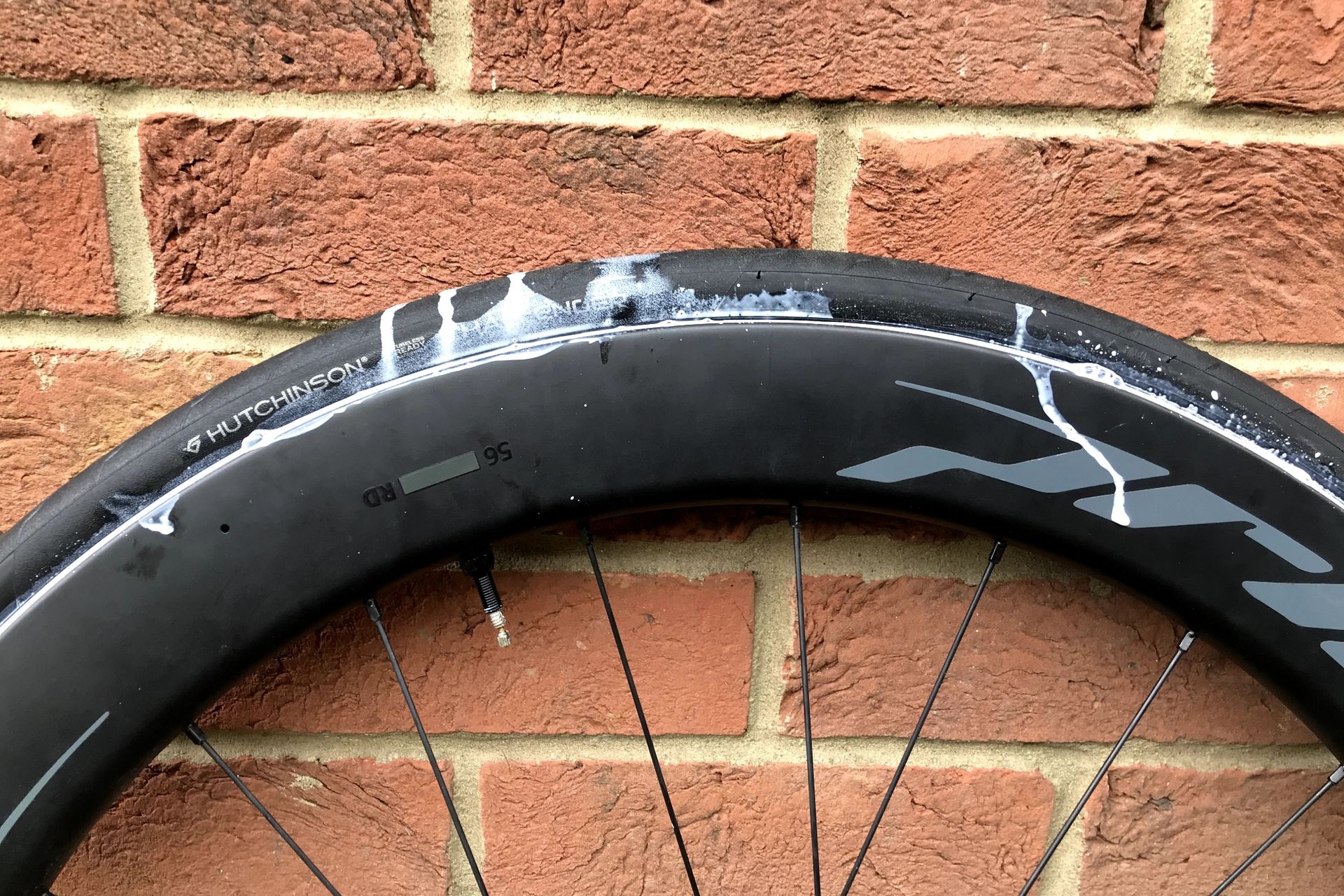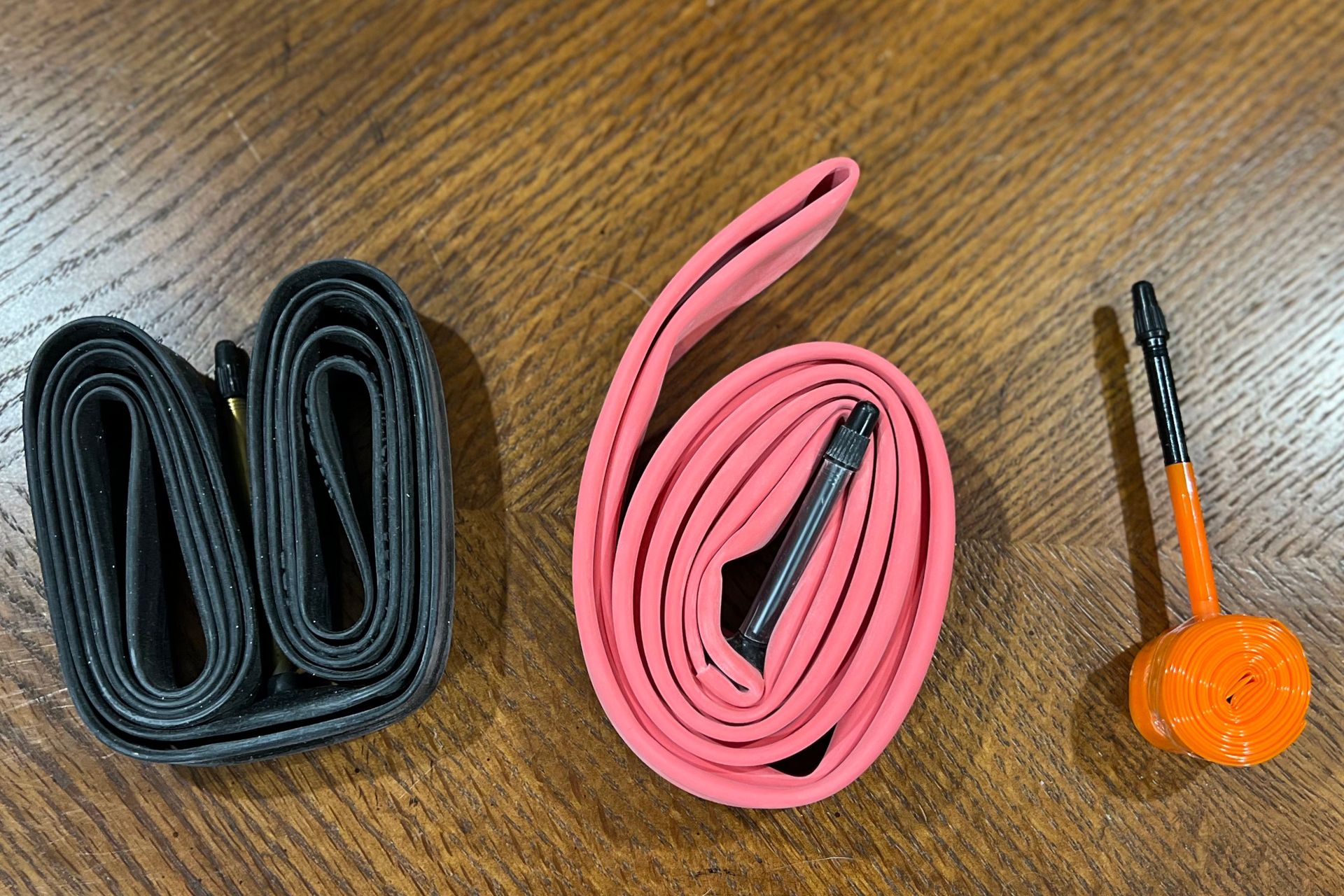Tubeless set-ups have several advantages for road cyclists: the rolling resistance of the tyres is less without the friction between the tyre and tube, you can run lower pressures for greater comfort and better grip, and there’s the promise of self-sealing if something sharp does penetrate your rubber.
But despite this, most road cyclists still prefer to run tubed tyres, happy in the knowledge that at some point they’ll once again be engaged in the cyclist’s rite of passage that is standing by the roadside fixing a flat. So why hasn’t road cycling jumped headlong into tubeless tech and enjoyed its many benefits, and, are there better alternatives?
A reputation for fiddly set up

Tubeless set ups can be fiddly, and messy
(Image credit: Jack Elton-Walters)
In truth there are a few factors at play here. First, tubeless set-up has a reputation for being awkward. And it’s well-earned. Although improved tolerances in wheel and tyre manufacturing have resulted in much improved compatibility, there are still plenty of tyres that are very hard to mount on rims or, conversely, so loose that they either don’t seal or, worse, blow off the rim once inflated.
Not only do you have different tyre manufacturers recommending different wheels, and vice versa, there is also the conundrum of hooked or hookless rims, resulting in thousands of permeations. Few people have the time or interest to keep abreast of such recommendations or the compatibility issues they present. Couple all this with the fact that there is a risk of a tyre blowing off a rim if you get it wrong, and user hesitance is somewhat understandable. The UCI’s urgent review of hookless designs certainly won’t have aided confidence.
There’s more. It can still be difficult to get a tubeless tyre to seat without pricey specialist equipment such as a pump with a reservoir or a powered compressor, and adding sealant, or swapping tyres with sealant inside, is a messy and frustrating task.
Overall, the industry seems to be hedging its bets. “It’s fair to say that there can be some apprehension over compatibility and set-up issues, which may be born out of previous experience,” Tim Ward of Schwalbe said. “Developments with our tyres and with wheel manufacturers over recent years mean that these issues are greatly reduced, but we believe there will always be a demand for a tubed set-up for the foreseeable future.”
There’s also the fact that running tubeless can still work out more expensive than tubed tyres, even premium ones. Sealant is not cheap either, and tubeless tyres are not fit-and-forget, requiring regular top-ups of tubeless sealant as it dries out over time.
Finally, although there’s the promise of punctures being sealed on the go – this simply isn’t true all the time, especially at the pressures road tyres are run at. So running tubeless tyres doesn’t obviate the need to carry a tube or a tubeless plug. Fixing a tubeless puncture by the side of the road is as time-consuming as dealing with a puncture in a tubed tyre, and a lot more messy.
Are specialist tubes a better option?

Left to right: standard tube, latex tube, TPU tube
(Image credit: Greg Kaplan)
A standard butyl inner tube still has its place as a low-cost, easy-to-repair solution. It does necessitate higher tyre pressures than tubeless to avoid pinch flats, though, and there’s marginally higher friction and a higher overall weight than tubeless. And, of course, there are still some minor compatibility issues with valve lengths and tube widths. If these are issues for you, then consider lightweight butyl inner tubes, although they’re delicate and there’s the risk of them stretching and bursting.
For riders looking for lighter weight and higher performance, latex tubes were for a long time the go-to option. While a standard butyl tube weighs 100g or more, a latex tube can halve that, although they’re significantly more expensive and can lose air over time.
Thermoplastic polyurethane (TPU) tubes are a new alternative that avoid many of the negatives of latex tubes, albeit at an even greater price – around £15 each. TPU tubes are even lighter than latex tubes – as light as 30g – and are more compact. They don’t leak air, aren’t prone to rapid air loss if punctured and can usually be repaired.
“We have demonstrated that our tubed type Pro One road tyres in combination with an Aerothan [TPU] tube can offer very similar performance and ride feel properties to a tubeless Pro One TLE set-up,” says Ward. “Its rolling resistance is on a par with, or better than, traditional latex tubes and yet despite being very lightweight it is much more robust and with much better air retention properties.”
Used with a standard, high-pressure clincher tyre, TPU tubes can be lighter than a tubeless set-up. Perhaps that’s why they were spotted in use by a few riders at the 2023 Tour de France.
Are lightweight inner tubes a better alternative to tubeless?
Tubeless works brilliantly for off-road riding, but not so well on road for those who don’t have a firm grip on the tech. The simple freedom of the bicycle should never be sacrificed for a marginal technical gain. That freedom comes from the bike’s ability to go anywhere, the minimum energy input required, and the ability to quickly fix problems. Inner tubes are easy to fix, and for 99.9% of all bike journeys, perfectly good enough.

















